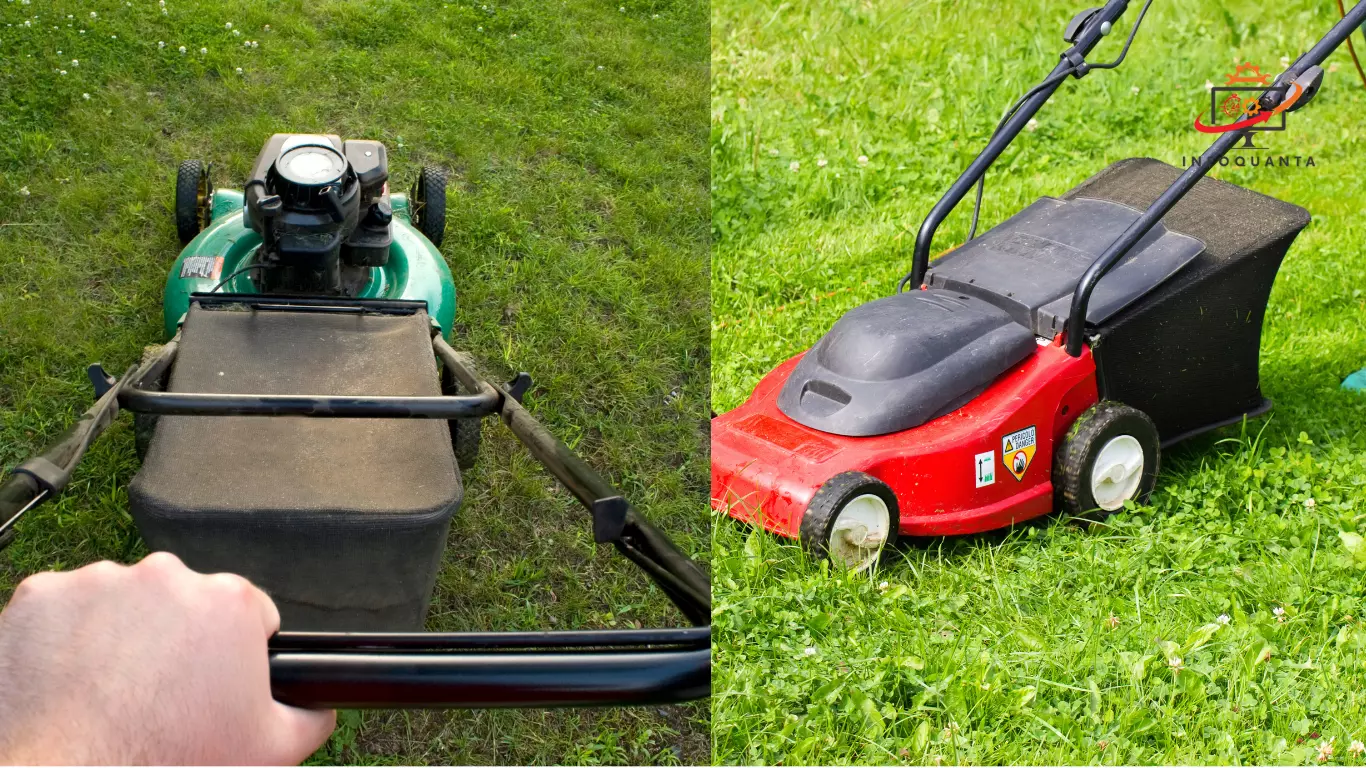When it comes to maintaining your lawn’s lush appearance, choosing the right equipment is crucial. Two common options that often create confusion are the traditional lawn mower and the push mower. In this comprehensive guide, we’ll delve into the distinctions between these two types of mowers, highlighting key factors that influence your decision. By the end, you’ll be equipped with the knowledge to select the perfect mower for your lawn care needs.
Understanding Lawn Mowers and Push Mowers
Lawn Mower:
A lawn mower is a broad term encompassing various types of mowers, including push mowers. However, when people refer to a lawn mower, they often mean a self-propelled or riding mower. These mowers come with engines that power the wheels, making it easier to maneuver across larger lawns without putting in physical effort.
Push Mower:
A push mower, as the name suggests, relies on manual pushing to move forward. It doesn’t have a self-propelling mechanism, requiring the operator to provide the force to move the mower across the lawn. Push mowers are usually simpler in design and operation compared to self-propelled mowers.
Key Factors:
1. Method of Operation:
Lawn Mower:
Self-propelled or riding mowers are driven by engines, allowing them to move forward without requiring significant physical effort from the operator. This is especially beneficial for larger lawns or hilly terrains.
Push Mower:
Push mowers require manual pushing to move forward. The operator’s physical effort determines the mower’s speed and direction, making them more suitable for smaller lawns or areas with relatively even terrain.
2. Size of Lawn:
Lawn Mower:
Self-propelled or riding mowers are better suited for larger lawns. Their engine-powered movement significantly reduces the operator’s physical exertion, making them ideal for covering extensive areas efficiently.
Push Mower:
Push mowers are better suited for smaller lawns where the operator can manage the physical effort required to push the mower. They’re also great for precision mowing in tighter spaces.
3. Features and Technology:
Lawn Mower:
Self-propelled and riding mowers often come with advanced features such as adjustable cutting heights, mulching capabilities, bagging options, and even GPS navigation in some high-end models.
Push Mower:
Push mowers are generally more straightforward in terms of features. They usually offer adjustable cutting heights and basic grass collection options.
4. Maintenance:
Lawn Mower:
Self-propelled and riding mowers tend to have more complex engines and mechanical parts, which might require more maintenance over time. Regular oil changes, air filter replacements, and other maintenance tasks are common.
Push Mower:
Push mowers are simpler in design, often requiring less maintenance. Basic tasks like blade sharpening, oil changes, and keeping the mower clean contribute to their longevity.
5. Environmental Impact:
Lawn Mower:
Self-propelled mowers with gas-powered engines contribute to noise and air pollution. Electric riding mowers are more eco-friendly, emitting fewer emissions and producing less noise.
Push Mower:
Push mowers have a minimal environmental impact since they don’t rely on fuel-powered engines. They produce no emissions and create less noise during operation.
Frequently Asked Questions (FAQs)
Q1: What’s the main difference between a lawn mower and a push mower?
The main difference lies in the method of operation. A lawn mower typically refers to a self-propelled or riding mower with an engine that powers its movement. On the other hand, a push mower requires manual pushing by the operator to move forward.
Q2: Which type of mower is better for a small yard?
For a small yard, a push mower is often a better choice. Its manual operation allows for precise control in confined spaces, and it’s typically more compact and easier to store.
Q3: Can I use a push mower on a large lawn?
While you can use a push mower on a larger lawn, it might be physically demanding. Self-propelled or riding mowers are better suited for covering extensive areas efficiently without as much effort.
Q4: Are there any benefits to using a push mower over a lawn mower?
Push mowers are often simpler in design, require less maintenance, and have a minimal environmental impact since they don’t rely on fuel-powered engines. They are also quieter during operation.
Q5: Do self-propelled mowers have any advantages over push mowers?
Self-propelled mowers are easier to use for larger lawns due to their engine-powered movement. They require less physical effort from the operator and often come with advanced features like adjustable cutting heights, mulching options, and more.
Q6: Are push mowers more affordable than lawn mowers?
Generally, push mowers tend to be more affordable than self-propelled or riding mowers. Their simpler design and manual operation contribute to a lower price point.
Q7: Can I get a push mower with adjustable cutting heights?
Yes, many push mowers come with adjustable cutting height options, allowing you to customize the lawn height according to your preferences.
Q8: Which type of mower is more environmentally friendly?
Push mowers are generally more environmentally friendly since they don’t rely on gas-powered engines, producing fewer emissions and less noise during operation.
Q9: Can I convert a push mower into a self-propelled mower?
Converting a push mower into a self-propelled one would require significant modifications, including adding an engine and drivetrain components. It’s often more practical to choose the right type of mower from the start.
Q10: What factors should I consider when deciding between a lawn mower and a push mower?
Consider the size of your lawn, your physical ability, desired features, maintenance requirements, and environmental concerns. These factors will help you make an informed decision based on your specific needs.
Conclusion
Choosing between a lawn mower and a push mower depends on various factors such as the size of your lawn, your physical ability, desired features, and environmental concerns. While lawn mowers offer convenience for larger areas, push mowers provide a more traditional, hands-on approach suitable for smaller lawns. Consider these key factors and methods of operation when making your decision, and you’ll find the perfect mower to keep your lawn looking its best year-round.

